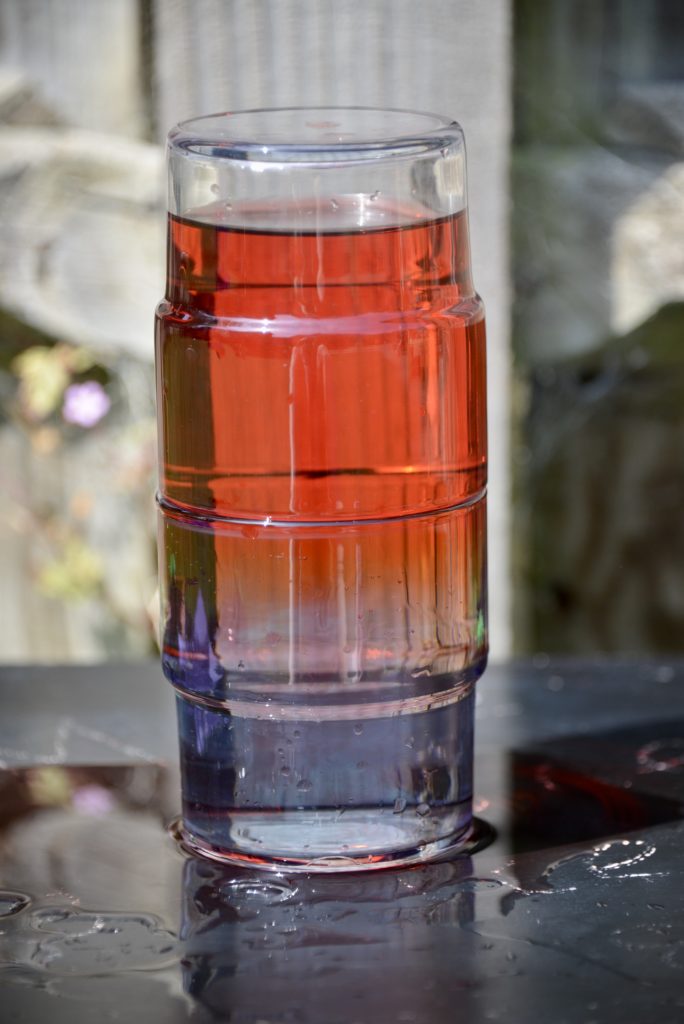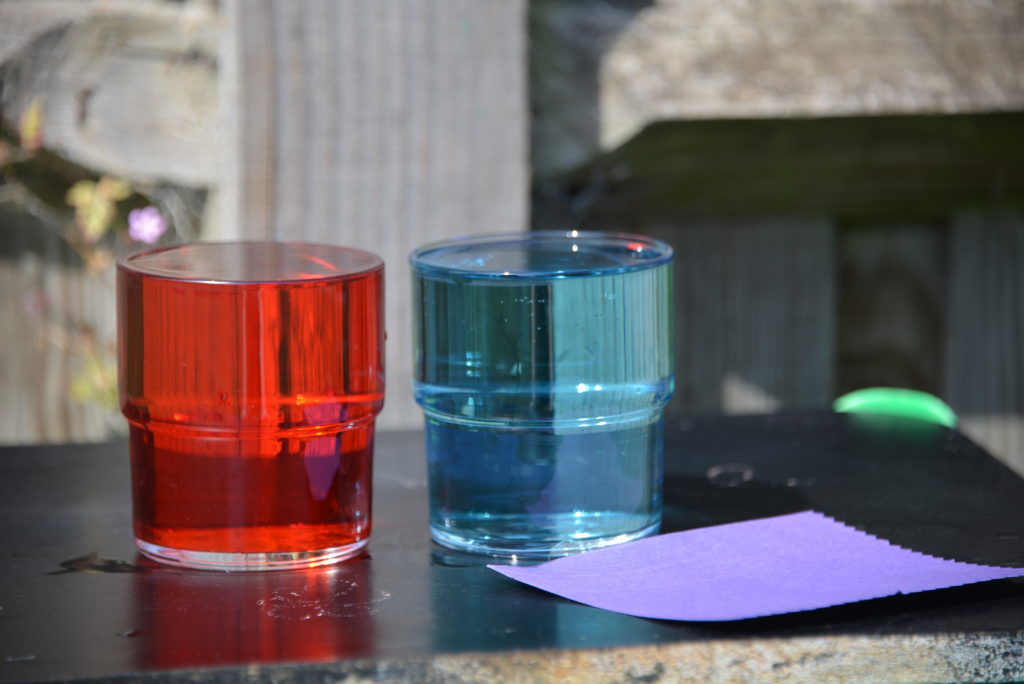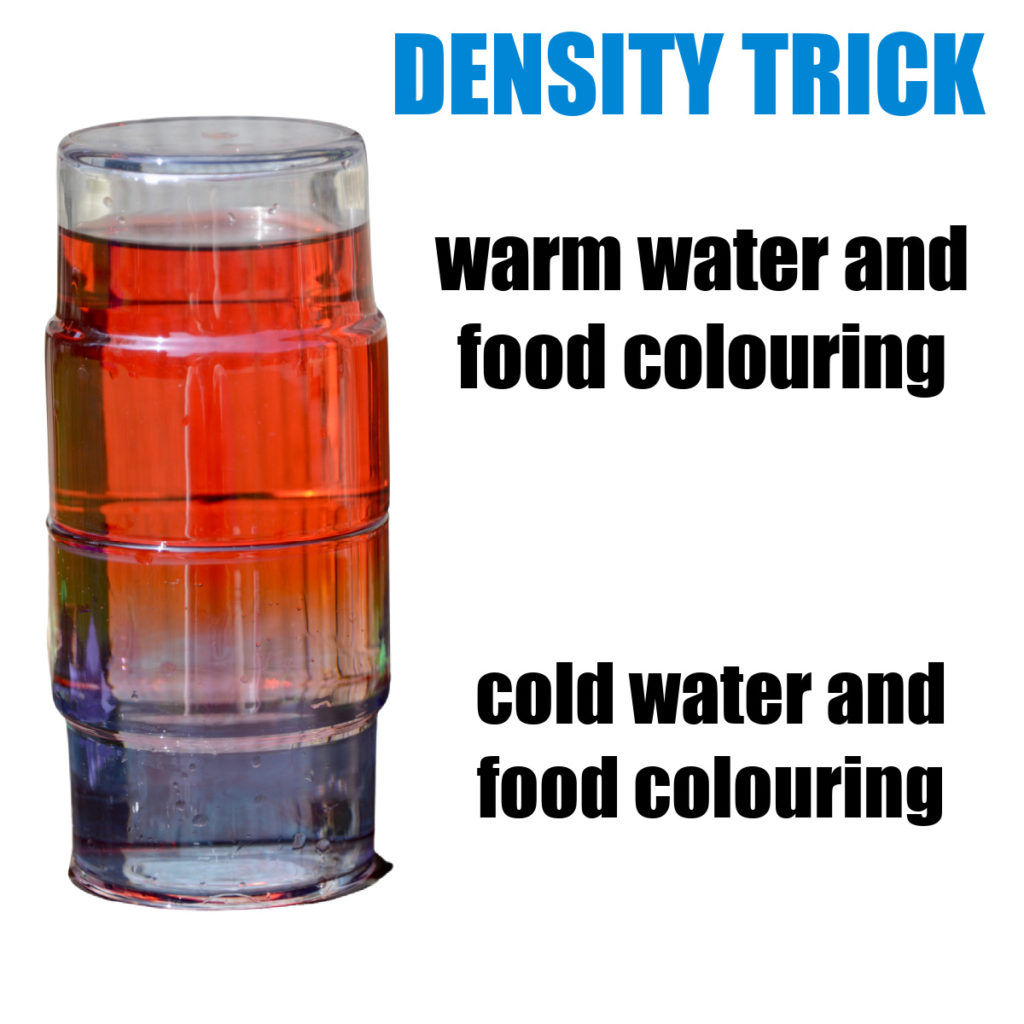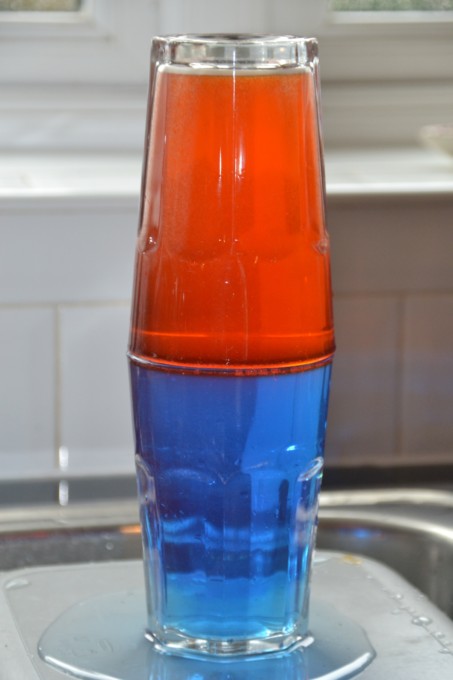This easy science activity demonstrates the difference in density between hot and cold water. It can be a bit messy so I would either do it outside or put the jars in a tray.
The demonstration works as cold water is more dense than hot water so the hot water sits on top of the cold.
When water is heated, water molecules move around faster, bounce off each other and move further apart. As there’s more space between the water molecules the density of warmer water is less than the same volume of cooler water.

You’ll need
Two small or medium glass jars
Hot water
Cold water
Small sheet of card
Food colouring
Tray – optional but advised

How to make hot and cold water density jars
Fill one of the jars with hot water and add a couple of drops of red food colouring.
Fill the second jar with cold water and add a drop of blue food colouring.
Check both jars are as full as possible.
Hot water on top of cold
Place a sheet of card over the jar filled with hot water and carefully place it on top of the jar with the cold water.
When the jars are balanced, carefully remove the card.
The two colours of water should remain separate.

Cold water on top of hot
Refill the jars and try again. This time place the cold water on top of the hot water.
The two colours of water should mix.
Density of water
Warm water is less dense than cold water so the red warm water sits on top of the cold water when the card is removed from between the jars.
If you put the hot water on the bottom the colours mix as the denser cold water drops down into the less dense hot water.
Our photo isn’t perfect as it’s hard to remove the card between the jars without some water spilling out, but do send me a photo if you get a better result.
Another density demonstration can be done using salt to increase the density of one jar of water. In the image below the blue water has the salt added.


Leave a Reply